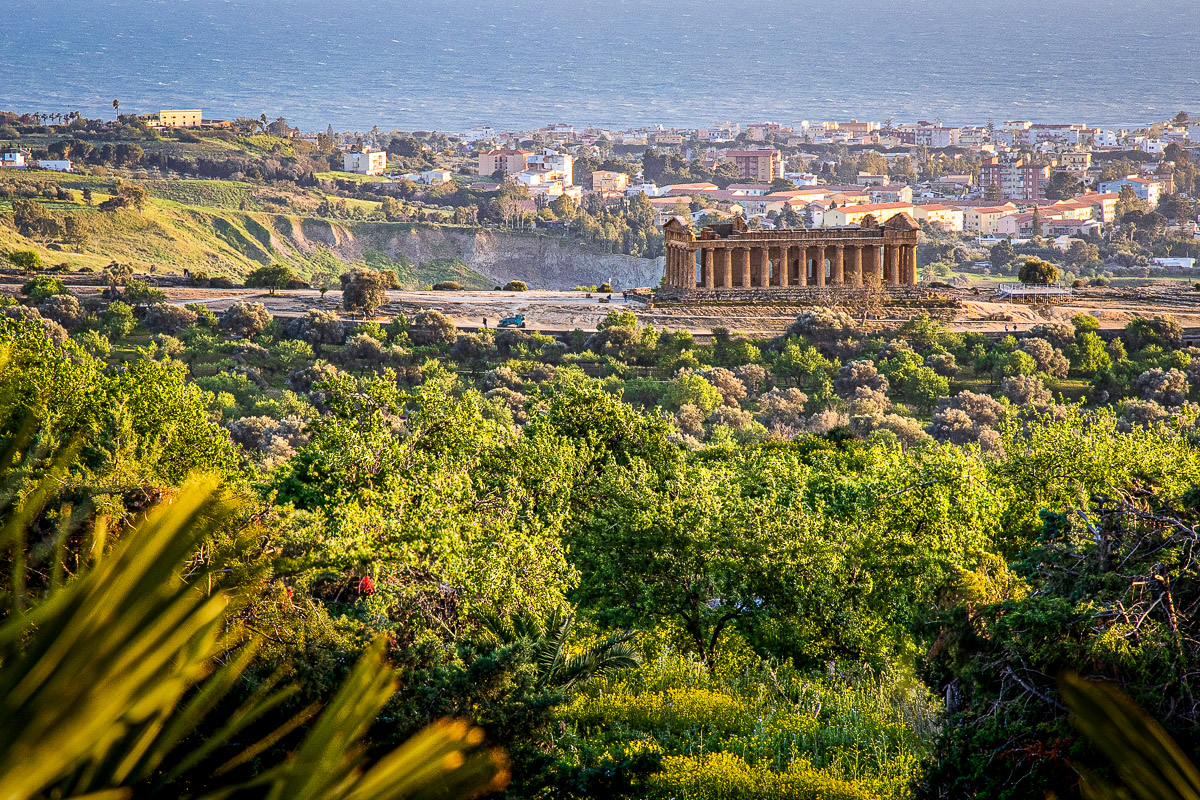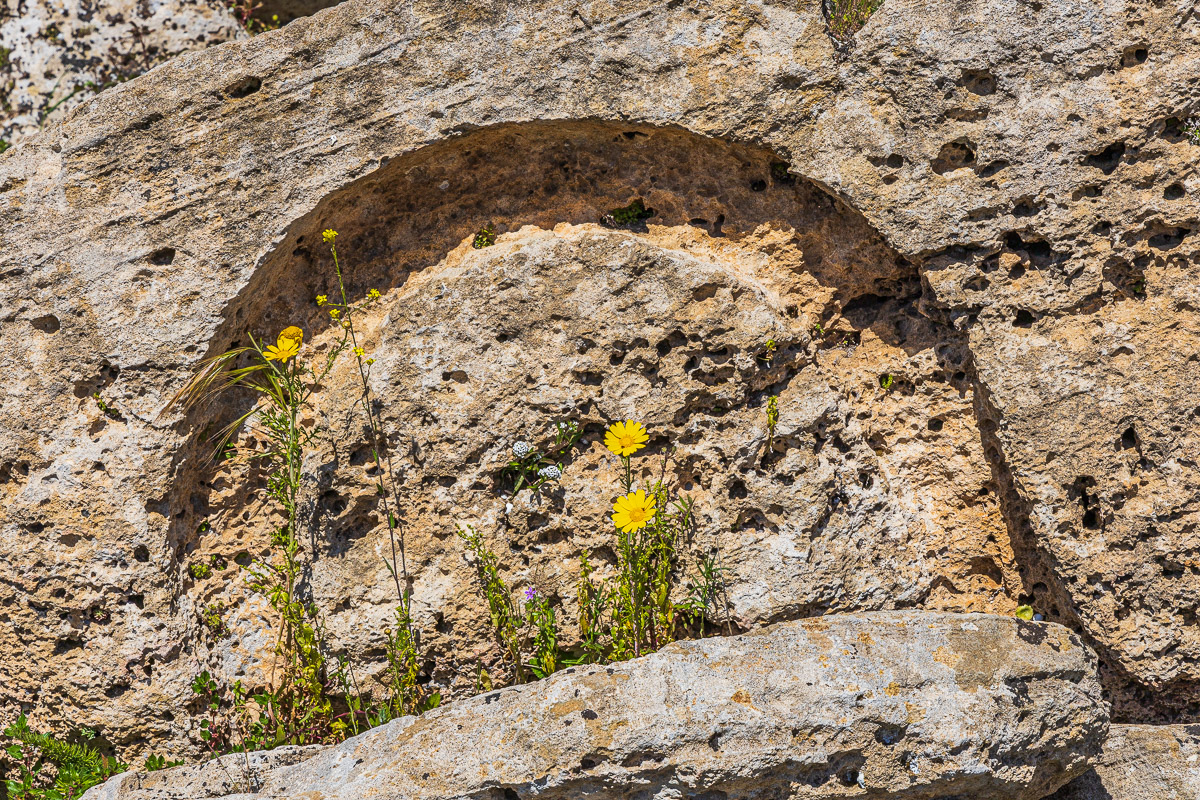From the garden behind our hotel in Agrigento, we could see a Greek temple, the Temple of Concordia. This was the first of many temples we would see over the next two days.

Valley of the Temples
Our hotel was only a short bus ride from the Valley of the Temples, where some of the best preserved Greek temples in Italy are located. According to Rick Steves’ guide book Sicily, these temples are “on par with anything you might find in Greece.” This should not be surprising when you recall that during this period of history, two of the three largest and most powerful city-states in greater Greece, Siracusa and Agrigento, were located in Sicily.
Fifteen temples were constructed in the Valley of the Temples in the 5th century BCE, each dedicated to a different god. A wall was built around the temples and the ancient city of Akragas (now Agrigento). Many of the temples have been lost, due either to the ravages of time or to the stones having been removed and used for different structures. A few of the temples have been partially rebuilt and offer a sense of the size and scale of the ancient city. One, the Temple of Concordia, remains in excellent condition. When it was converted to a Christian church in 597, the gaps between the columns were filled in to create solid walls. It remained that way until 1788, when it was returned to its original state. As a result, the columns had added support for 1200 years and remained standing, leaving it among the best of the remaining Greek temples in the world.
Mouse over the small photos in galleries to see captions.
Click on any one to enlarge, then use arrows to scroll through the rest of the images.
Temples had also been constructed and dedicated to Juno, Castor and Pollux, Zeus, Hercules and others. They were all built in a similar way. Because there is no marble in Sicily, the temples were made of sandstone. Slabs of rock were quarried, formed into drum-like shapes and rolled to the site. There they were hoisted on top of each other, connected with wooden pegs, and turned into columns. The columns were then fluted and covered with plaster to make them look like a single piece.
In addition to the expansive display of Greek ruins in the Valley of the Temples, we also visited the nearby Agrigento Regional Archaeological Museum, which displays over 5688 artifacts illustrating the history of the area from prehistoric times to the end of the Greek-Roman period. There were lots of old pots — very interesting old pots.
Temples of Selinunte
We departed Agrigento the next day and, while making our way to Palermo, stopped at the Archaeological Park of Selinunte. Selinunte was the westernmost Greek colony. It was established in 628 BCE and was destroyed and abandoned in 250 BCE, never to be reoccupied. As in the Valley of the Temples, the 665-acre park at Selinunte contains a large number of temples, most of them in ruins. Unlike the structures in the Valley of the Temples, however, these temples are designated by letters like A, B and D. Being Greek temples, I wondered why there weren’t labeled Alpha, Beta and Delta.
The first temple that we saw, Temple E, was surprisingly large and intact. It’s not original, however, having been reassembled in the 1950s. Archeologists would not condone that practice today, but Temple E is one of the few Greek temples anywhere that tourists can enter. Although officially given a letter, some scholars believe it was dedicated to Hera and others argue that it was dedicated to Aphrodite. Scholars do not, however, argue about whether it should be called E or F. Regardless of the name, it’s from the 5th century BCE. The other temples in the park were mostly a few stray sections of standing columns or total piles of rubble.
Artifacts from the Selinunte site have been collected and are on display in the Baglio Florio Archeological Museum
Two days of temple touring were more interesting than the somewhat repetitive images in this post can illustrate. We were dwarfed by the size and amazed by the number of these arduously-built temples the ancient Greeks had constructed to worship their gods. Walking in and around them was an interesting experience and the information shared by our local guides gave us a good historical perspective. What I didn’t come away with, however, was a feeling for what life was actually like for the people living here in the 5th century BCE. That I cannot even imagine.

It was a sunny, blue-sky day in March and flowers grew oblivious to the ruins and the history. We did a lot of walking so it was nice to return to our large, comfortable, air-conditioned 21st century bus and continue down the road to Palermo.
<— Villa Romana del Casale (Sicily Part 8) :: (Sicily Part 10) —> Churches and more Churches